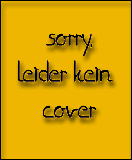 Neuerscheinungen 2019Stand: 2020-02-01 |
Schnellsuche
ISBN/Stichwort/Autor
|
Herderstraße 10
10625 Berlin
Tel.: 030 315 714 16
Fax 030 315 714 14
info@buchspektrum.de |

John Clement, Mary Anne Rea-Ramirez
(Beteiligte)
Model Based Learning and Instruction in Science
Herausgegeben von Clement, John; Rea-Ramirez, Mary Anne
Softcover reprint of the original 1st ed. 2008. 2019. ix, 279 S. 235 mm
Verlag/Jahr: SPRINGER NETHERLANDS; SPRINGER 2019
ISBN: 9402413103 (9402413103)
Neue ISBN: 978-9402413106 (9789402413106)
Preis und Lieferzeit: Bitte klicken
Anyone involved in science education will find that this text can enhance their pedagogical practice. It describes new, model-based teaching methods that integrate social and cognitive perspectives for science instruction. It presents research that describes how these new methods are applied in a diverse group of settings, including middle school biology, high school physics, and college chemistry classrooms. They offer practical tips for teaching the toughest of key concepts.
Introduction: A ´Hidden World´ Of Nonformal Expert Reasoning 1.1 Why Study Nonformal Reasoning? 1.2 The Background From Which I Approached This Work 1.3 Methodology: Qualitative Nature Of The Study 1.4 General Features Of The Descriptive Methodology Used 1.5 General Theoretical Framework 1.6 Section Summaries And Approaches To Reading This Book PART ONE: ANALOGIES, MODELS AND CREATIVE LEARNING IN EXPERTS AND STUDENTS SECTION I: EXPERT REASONING AND LEARNING VIA ANALOGY 2 Major Subprocesses Involved in Spontaneous Analogical Reasoning 2.1 Some Major Issues in Analogical Reasoning 2.2 Method of Study 2.3 Initial Observations from Transcripts 2.4 Major processes used in analogical reasoning 2.5 Conclusion 3 Methods Experts Use to Generate Analogies 3.1 Introduction 3.2 Definitions of Basic Concepts and Observations 3.3 Discussion 4 Methods Experts Use to Evaluate an Analogy Relation 4.1 The Importance of Establishing the Validity of an Analogy Relation 4.2 Examples from Case Studies 4.3 Analogy Evaluation in the Doughnut Problem 4.4 Discussion of Findings and Connections to History of Science 4.5 Summary 5 Expert Methods for Developing an Understanding of the Analogous Case and Transferring Findings 5.1 Evaluating and Developing Understanding of the Analogous Case. 5.2 Transferring Findings 5.3 Summary on Creative Analogy Generation SECTION II: MODEL CONSTRUCTION AND SCIENTIFIC INSIGHT IN EXPERTS 6 Case Study of Model Construction Cycles in Expert Reasoning 6.1 Introduction 6.2 Background Questions from Philosophy of Science 6.3 How Are Theoretical Hypotheses Formed in the Individual Scientist? 6.4 Protocol Evidence on Construction Cycles That Use Analogies 6.5 Summary of Evidence For AModel Construction Cycle as A Non-Inductive Source for Hypotheses 6.6 Major Nonformal Reasoning Patterns in the Preceding Chapters 7 Creativity and Scientific Insight in the Case Study for S2 7.1 Eureka or Accretion? The Presence of Insight in S2´s Protocol 7.2 Creative Mental Processes 7.3 Darwin´s Theory of Natural Selection 7.4 Initial List of Features of Creative Thinking from this Case Study and Remaining Challenges SECTION III: NONFORMAL REASONING IN STUDENTS AND IMPLICATIONS FOR INSTRUCTION 8 Spontaneous Analogies Generated by Students Solving Science Problems 8.1 Use of Analogies by Students 8.2 Conclusion 8.3 Appendix: Examples of Problems and Spontaneous Analogies 9 Case Study of a Student who Counters and Improves his own Misconception by Generating a Chain of Analogies 9.1 Spontaneous Analogies in a Student´s Problem Solution 9.2 Conclusion 10 Using Analogies and Models in Instruction to Deal with Students Preconceptions 10.1 Introduction 10.2 Teaching Strategy 10.3 Teaching Interviews 10.4 Applications to Classroom Teaching 10.5 Conclusion 10.5.2 Explanatory Models vs. Specific Analogous Cases PART TWO: ADVANCED USES OF IMAGERY AND PLAUSIBLE REASONING IN SCIENCE AND MATHEMATICS SECTION IV: IMAGERY AND PHYSICAL INTUITION IN EXPERTS AND STUDENTS 11 Analogy, Extreme Cases, and Spatial Transformations in Mathematical Problem Solving by Experts 11.1 Introduction 11.2 Case Study of Analogical Reasoning in a Mathematics Problem 11.3 Results on the Use of Analogies for Eight Subjects 11.4 Other Creative Non-formal Reasoning Processes 11.5 Discussion 11.6 Conclusion 12 Depictive Gestures and Other Case Study Evidence for Mental Simulation in Experts and Students 12.1 Introduction 12.2


